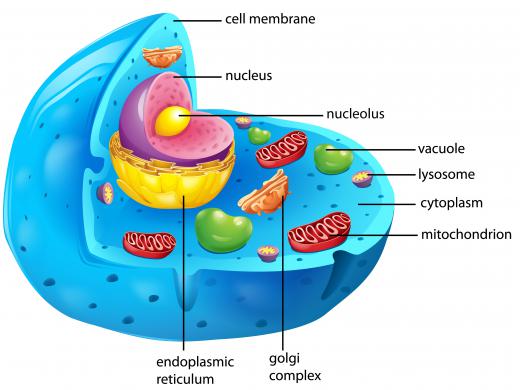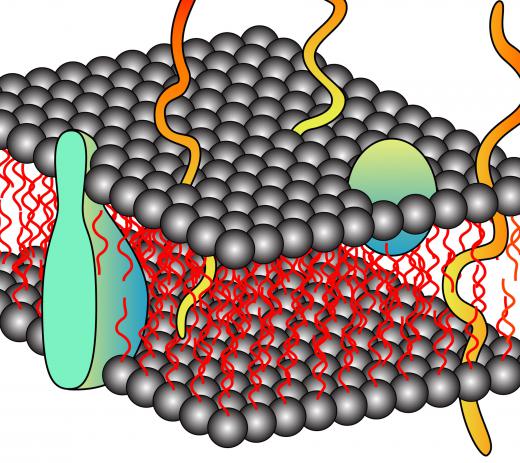What Is Membrane Potential?
A membrane potential is the voltage which exists across the membrane of a cell. It is also known as a transmembrane potential, and it is particularly important in nerve cells, or neurons. The membrane potential is caused by an electrical potential difference between the inside and the outside of the cell. When a neuron is at rest, meaning it is not firing a nerve impulse, the inside of its cell membrane has a negative charge when compared to the cell's outside. This results from different concentrations of charged ions immediately inside and outside the membrane.
Membrane potentials arise because cell membranes do not allow sodium and potassium ions to pass freely in and out of cells and reach an equilibrium. Instead, special passages known as ion channels permit potassium ions to move out through the cell membrane, reducing the positive charge inside the cell. Ion pumps in the membrane use energy to pump sodium ions out of the cell, while pumping potassium in. For each pair of potassium ions that are moved into the cell by these ion transporters, three sodium ions are moved outside, causing an overall loss of positive charge from the cell. Negatively charged protein molecules inside the cell are also prevented from leaving.

Together, these factors create a negative charge inside the cell relative to the outside, which forms the membrane potential. The potential is constant at rest, but changes in nerve cells when impulses are transmitted from one neuron to another. During nerve impulse transmission, what is known as an action potential occurs, where the cell membrane goes through a process called depolarization. After the action potential, the membrane potential returns to its normal resting state, which is normally measured as a difference of -70 millivolts between the inside and the outside of the membrane.

The action potential begins when a nerve stimulus arrives at the cell, opening special sodium channels in the cell membrane. Positively charged sodium ions pass into the cell, and the membrane potential changes, becoming less negative. When a point known as the action threshold is reached, many more sodium channels open and the inside of the cell membrane becomes positively charged, the reverse of normal.

Around the peak of the action potential, potassium channels open and potassium floods out of the cell. This makes the inside of the cell more negative so that the membrane is repolarized. Sodium channels also close around this time. Usually, the repolarization overshoots and gradually returns to the normal resting membrane potential. This process of reversing the membrane potential to create an action potential is what allows impulses to be transmitted along nerves.
AS FEATURED ON:
AS FEATURED ON:













Discuss this Article
Post your comments